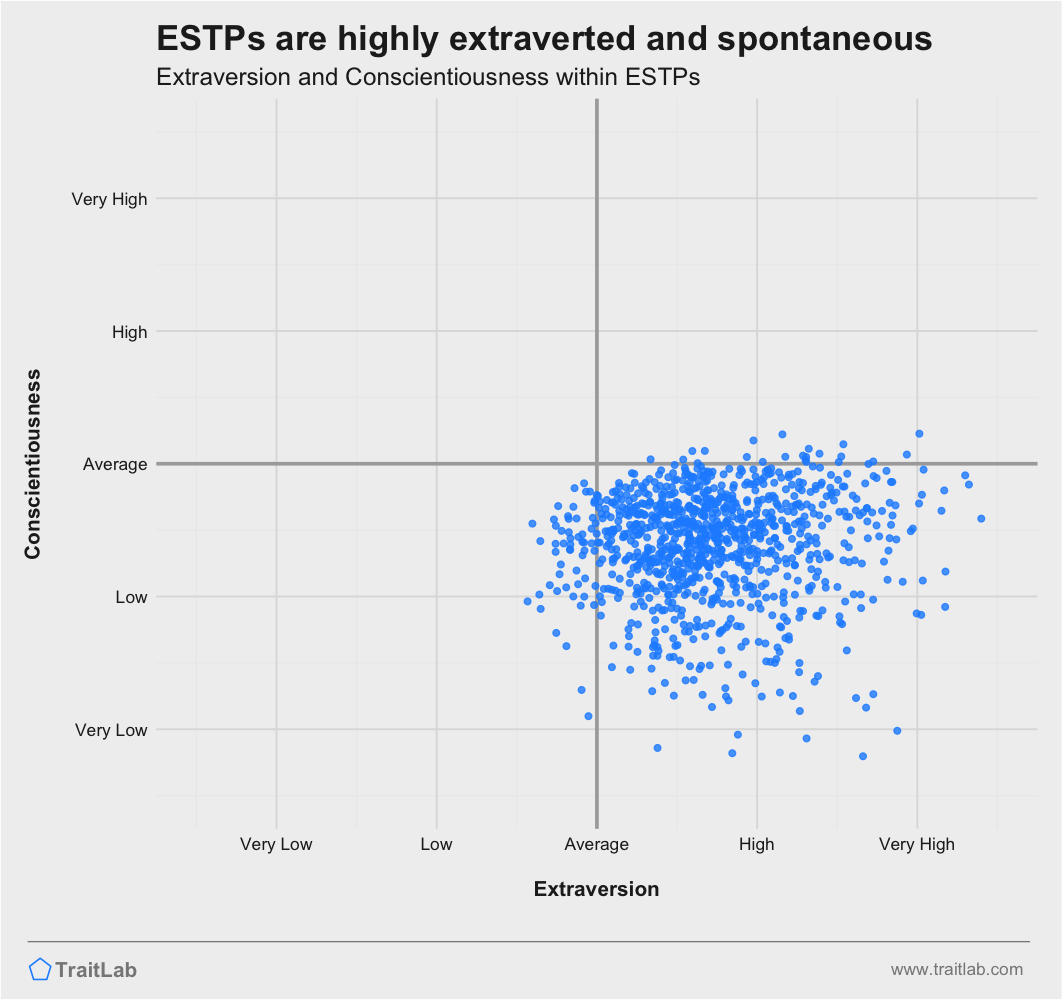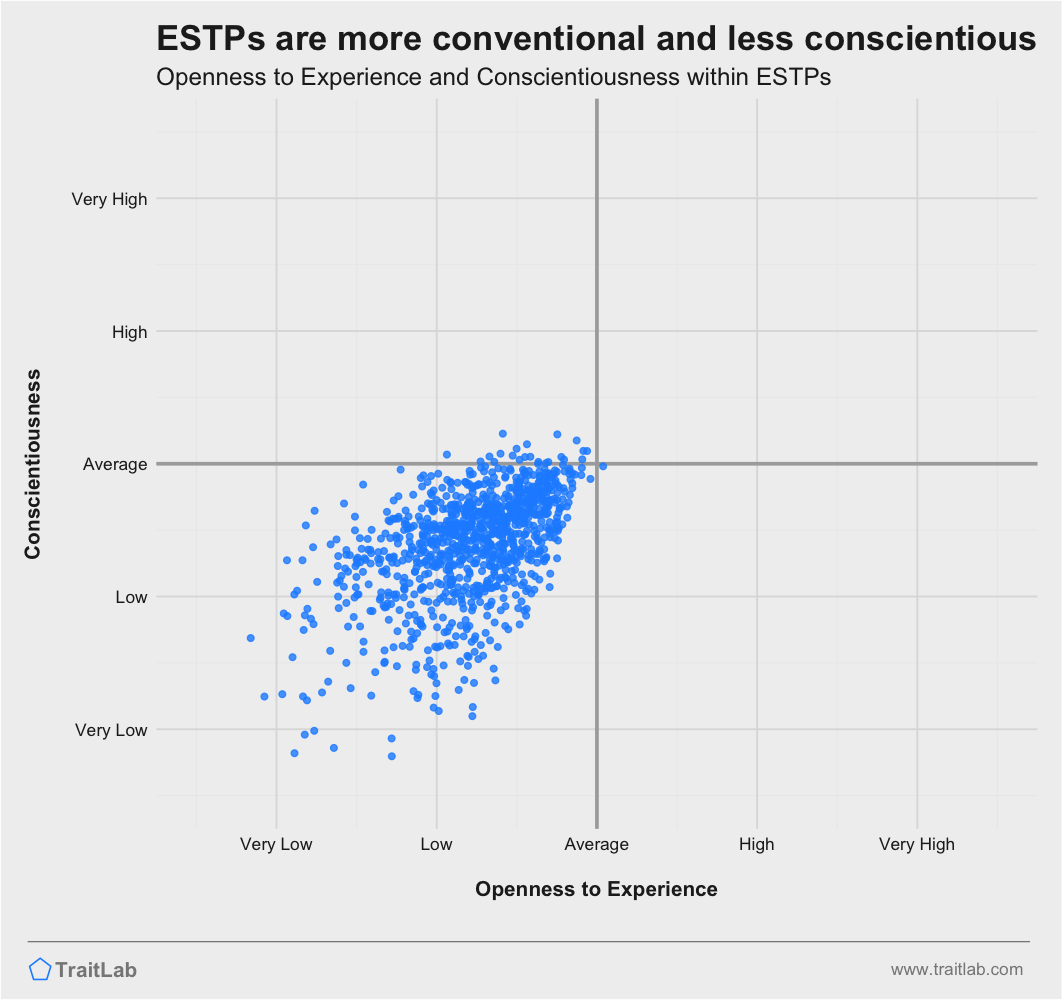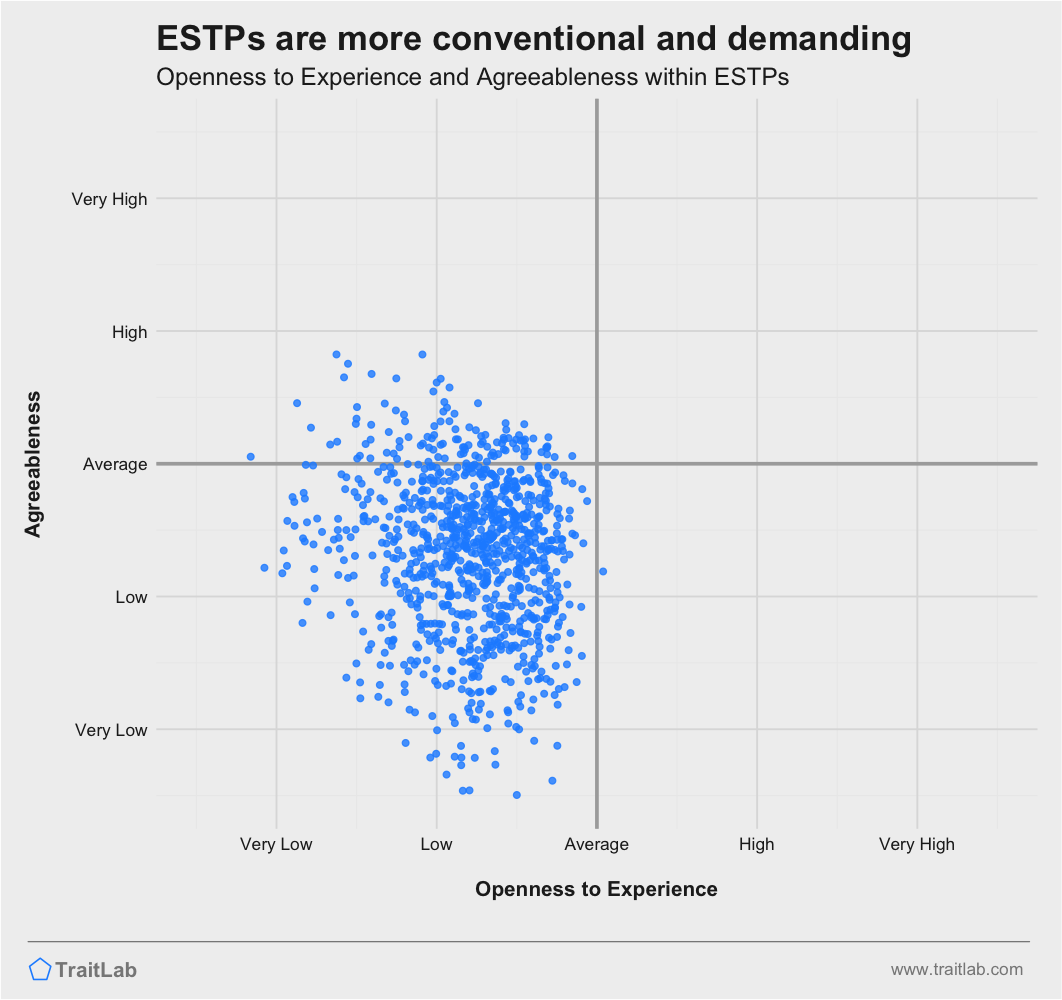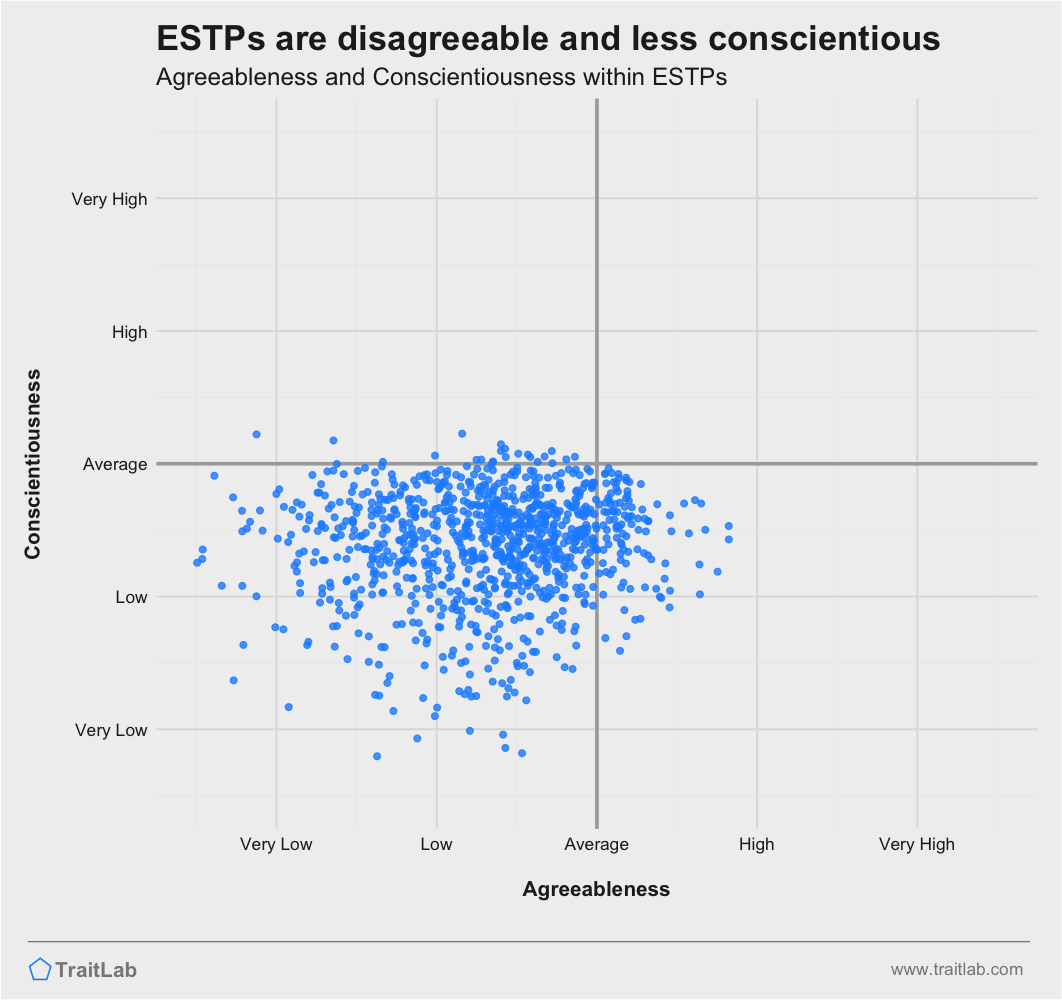See how the ESTP's personality dimensions combine to yield several remarkable patterns
Reading time: 5 minutes

Gregory Park, Ph.D.
Author
ESTPs tend to have distinct patterns on the Big Five personality traits, and these patterns lead to a few common strengths among ESTPs.
ESTPs don’t mind occasionally showing off or causing a scene, when the mood strikes them.

ESTPs often score higher on Extraversion and lower on Conscientiousness. Together, this combines to form an unpredictable blend of thrill-seeking and rebelliousness. Most ESTPs are comfortable being at center stage and know how to use the attention to accomplish their goals.

With their combination of lower Conscientiousness and lower Openness, ESTPs will often prefer living for the here and now, rather than making detailed plans for a distant future. Their preference for the present may lead them to change their minds frequently, depending on their current circumstances.
While their spontaneous and flexible nature can make them more adaptable in the short-term, these same qualities allow them to be easily distracted while working towards longer-term goals.
ESTPs will often say what they mean and use very few words to say it.

High Openness is related to using more sophisticated, abstract language, whereas lower Openness (as seen in ESTPs) correlates with more straightforward, concrete words and phrases. Combined with this, most ESTPs tend to score lower on Agreeableness, which influences our use of polite, friendly language. The lower Agreeableness of many ESTPs may be behind their more direct and frank communication.
ESTPs often score on the lower ends of Agreeableness and Conscientiousness, two dimensions closely related to trust and adherence to social norms.

People who score low on both, like ESTPs, tend to be suspicious of others’ motives and have a greater distrust of individuals and institutions.
They may feel an inherent resistance to authority and certain social conventions. Rather than following others and trying to fit in, ESTPs have a strong independent streak and prefer to go their own way.
Understanding an individual’s unique strengths requires more than just knowing a personality type or Big Five personality traits. Even among ESTPs, every person has their own set of strengths that they use when they are at their best.

What are your true strengths?
Discover your personal strengths and lean into what you do best.
One easy way to learn about your own strengths is with the Strengths profile in TraitLab Plus.